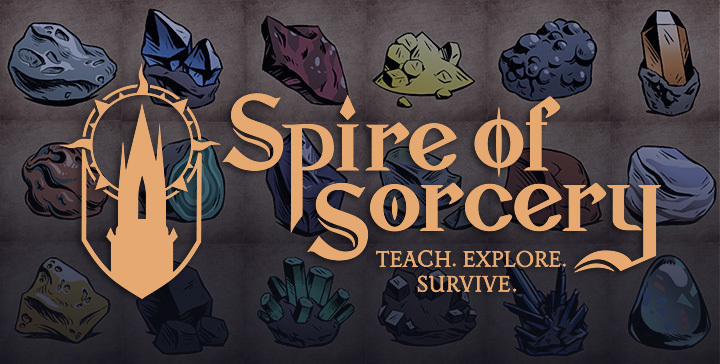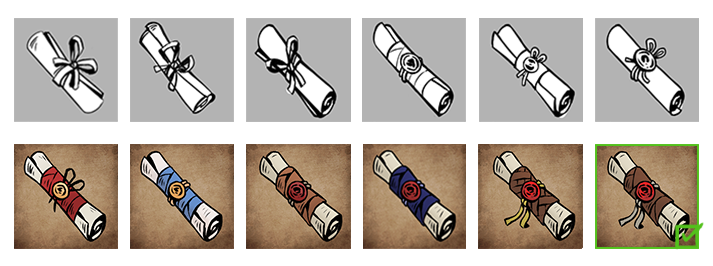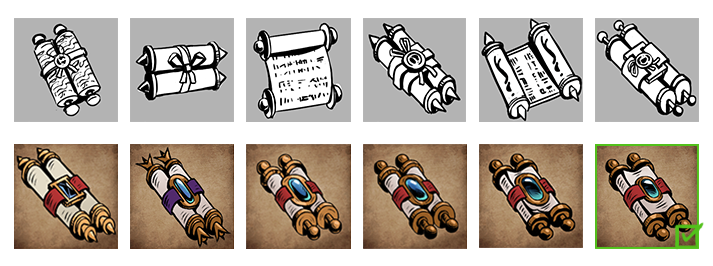#38 – ROOMS
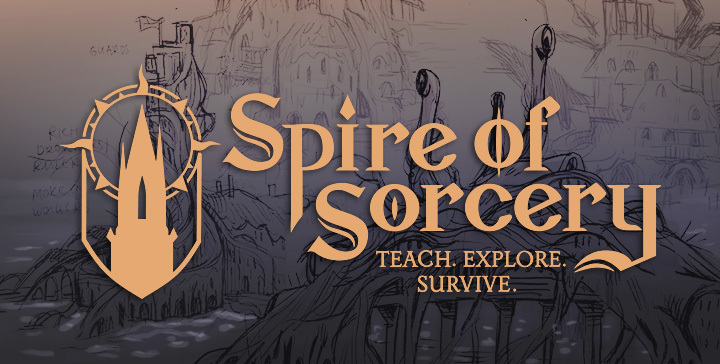
In the previous issue of this blog, we’ve already discussed how Mage Suite, Living Quarters and Classroom work in the game. Today, we take a look at Workshop, Alchemic Studio and Kitchen. But first, let’s talk a little bit about the development process.
Hideo Kojima (小島秀夫) recently compared the work of game designer to that of a chef at a restaurant, and we tend to agree. You pick the ingredients, you learn the techniques, and then – importantly! – you taste and adjust, before serving the dinner.
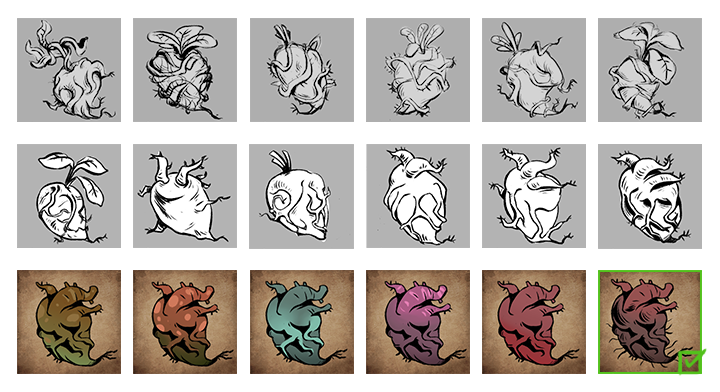
In a similar fashion, we started on Spire of Sorcery with certain strengths (our experience of releasing and operating Gremlins, Inc.) and a number of big ideas that we intended to mix together (defined in the game’s motto: “Teach. Explore. Survive.”).
As we moved forward with the production, certain mechanics were added to the mix, and certain were thrown out. Tactical battles? Out, because they would derail the experience. Books as a commodity, a source of knowledge and a possible loot? In, because they add a new layer on top of everything, from trading to learning and to exploration.
From a certain perspective, the whole process of development of Spire of Sorcery can be viewed as something like two thousand design decisions made in balance with each other, and then properly executed.
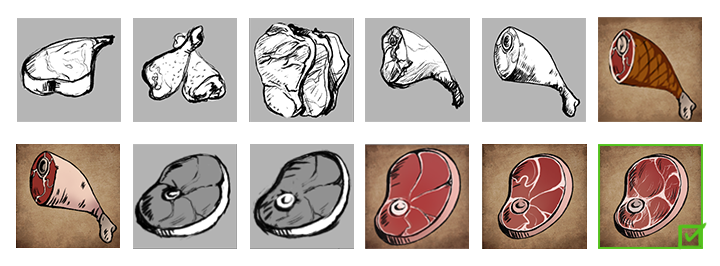
What does it mean for a character to be tired – in terms of game mechanics? What is the difference between a character who is simply “hungry” and a character who is “starving”? How does a poisoning reveal itself through external symptoms, and what does it take to discover the poison used – and then to find the cure?
Every day, we do our best to answer such questions, and then to execute the decisions at the highest level accessible to our team. Our artists scratch their heads looking for the best fitting icon to show “this character ate too much food and suffers negative consequences for it”. Our interface design team runs dozens of emulations of how players will access and use the Library in the game – to remove clutter and shorten the way for the most common actions.
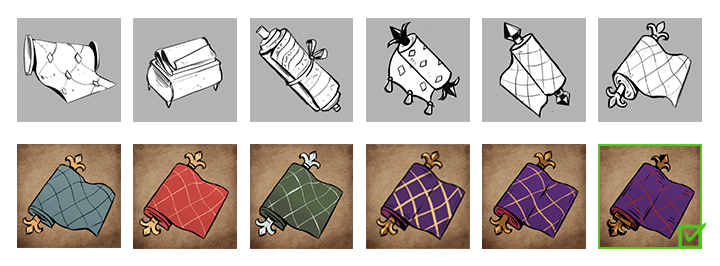
Even I, the lowly writer of this development blog, go through 5 cups of osmanthus oolong tea (桂花乌龙茶) before I settle down on a specific topic, deleting the topics that are too boring or too complicated to expand upon (when you will eventually come across a boring blog post, please know that it is not because of my lack of trying, but because of my supply of this oolong running out!).
In the end, nothing that we do is “final”, because our ambition is not to cook a specific “soup” – but to cook a “soup” that would put a smile on your face. So, if today we say that every skill of a disciple remains hidden until an exam is undertaken, but during the beta test we discover that it causes a lot of unnecessary activity in the game – we will amend this mechanics in a blink of an eye. We want you to discover the world of Run, to teach and to explore, and to try to survive in the heart of the Wild Lands. And whatever adjustments it takes to make it a fun, engaging game, please rest assured that we are committed to make them – today and tomorrow, or during the closed beta test, or during the Early Access period… or even after the full release!

WORKSHOP
This is the room where your disciples (and your mage) use their skill of Artificing and the corresponding secondary skills.
Upgrades available:
Efficiency. Capacity.
Resources:
Here you access two groups of items: items from the Warehouse that are tagged as “raw materials” (for example, iron; wood; emeralds) and items from the Warehouse that are tagged as “damaged” (clothing, equipment, weapons).
Actions:
This is where you can make new things (for example, use tailoring – a secondary skill – to sew a new clothing set) and repair damaged things (for example, use blacksmithing – also a secondary skill – to repair a helmet).
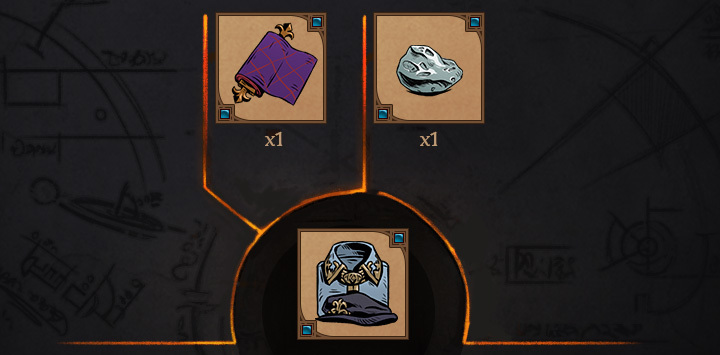
ALCHEMIC STUDIO
This is the room where you disciples (and your mage) use their skill of Alchemy.
Upgrades available:
Efficiency. Capacity.
Resources:
Here you access two groups of items: items that are used as ingredients in alchemic recipes, grouped by their alchemic properties (there are 26 alchemic properties in the game, as discussed here); and alchemic items from the Warehouse that have been already previously produced (potions, powders, elixirs).
Actions:
This is where you can make use of the discovered (or purchased or found) alchemic recipes in order to combine several ingredients to produce a new item. Learning the recipes, discovering the properties of different items and mastering the skill of alchemy that allows to combine items and their properties in order to create new things, is a must in order to win the main campaign of the game.
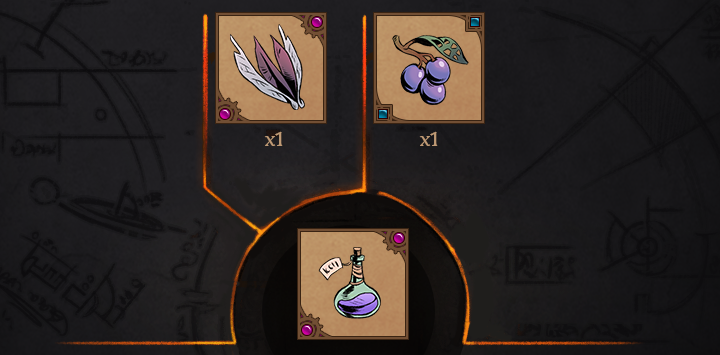
KITCHEN
This is the room where disciples use the secondary skill of Cooking (it belongs to the primary skill of Alchemy).
Upgrades available:
Efficiency. Capacity.
Resources:
Here we see two groups of items: items tagged with “raw food” and “delicacy/exotic raw food”, which can be eaten raw right away or used in preparation of cooked food (we also see food tagged with “spices”, which is used in preparation of food but cannot be eaten raw on its own); and ready-to-eat food that has been bought/prepared before, and is currently stored in the Warehouse.
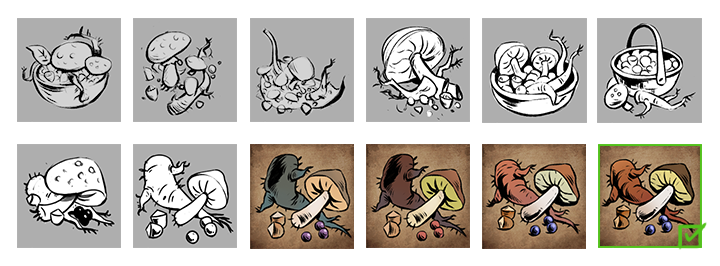
Information:
This room presents the data that is essential to proper management of the Spire: the amount of food currently in the storage; the amount of food produced in the last few days; and the amount of food actually consumed in the Spire in the last few days – as well as a prognosis as to how many days the Spire can survive using the existing supplies. The stats cover the days that have already passed because production and consumption depend on the individual disciples. For example, you may think that 10 disciples consume 30 rations per day, but with a few gluttons you may see that number climb up to 50, while if the cook is currently depressed, the production of rations will fall even below the nominal value.
Actions:
This is where your disciples cook food that is later stored in the Warehouse and consumed in the Mess Hall.
Policies:
Here you set what we call “the eating policy of the Spire”: in the Early Access version, you are able to mark certain types of food as “off limits” for disciples (for example, prohibiting the eating of Travel Rations as you save them for parties of explorers). Later on, once Mess Hall is added to the game, we expect to detail the eating policy into creating groups of disciples with different access rights (for example, you may allow the Inner Circle of your disciples to eat Ideal Rations and Diet Rations, while the Outer Circle will munch on Magic Porridge and Regular Rations).
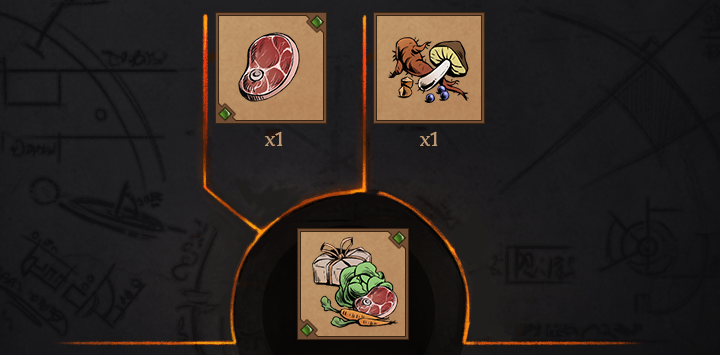
–––
That’s it for today! In the next issue of the blog we’ll talk about the remaining rooms from the Early Access version: Laboratory, Library, Warehouse and Magic Energy’s Storage. As always, for updates on work in progress, please check the game’s official Discord server.
–––

ːsummer_magicː Spire of Sorcery – Character Generator (Steam)
ːsummer_magicː Official Discord server
ːsummer_magicː Twitter (game updates)
ːsummer_magicː Facebook (game updates)

ːmaliceː Official Discord server
ːmaliceː Twitter (game updates)
ːmaliceː Facebook (game updates)
ːmusicː Original Soundtrack on Spotify

ːnotebookː Twitter (studio news)
ːnotebookː Facebook (studio news)
ːnotebookː "Behind the scenes" Instagram
ːnotebookː YouTube
